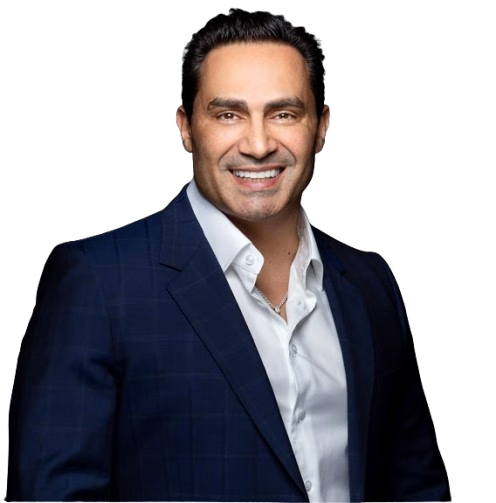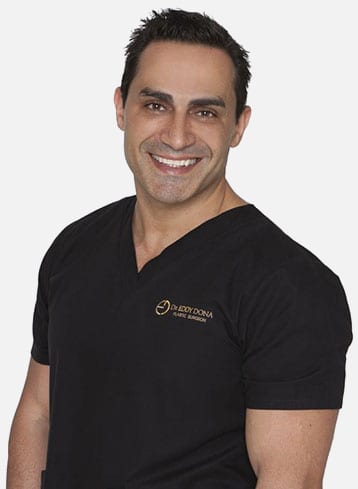360 Tummy Tuck (Abdominoplasty)
Mon 5th Aug 2024
A 360 TUMMY TUCK, aka as a Belt Lipectomy, is an operation designed to remove rolls of excess skin and the associated fat in the lower back, flanks, and abdominal region. It also lifts the buttock and pubic regions. A 360 Tummy Tuck combines two operations: a Buttock Lift and a Tummy Tuck (Abdominoplasty), which results in one continuous circumferential scar contained within the belt line – 360 degree enhancement.
Men and women who have undergone significant weight loss will often be left with excess skin and associated fatty tissue along the buttocks, flanks, and abdominal region. The primary issue associated with excess skin is largely functional, with aesthetics being a secondary concern. Therefore, a 360 Tummy Tuck essentially reconstructs this area by removing the excess skin creating far more functional and aesthetic form – helping to create lifted buttocks, lifted pubic region, and tighter midsection.
A 360 Tummy Tuck is a complete reconstruction of the belly and buttocks in one operation.
360 Tummy Tuck and its other terms
Throughout the field of Plastic Surgery, the 360 Tummy Tuck may also be referred to as a:
- BELT LIPECTOMY – referencing the area of concern that is reconstructed – the ‘Belt Line’. Similar nomenclature to the Bra Lipectomy which addresses the ‘Bra Line’.
- TOTAL BODY LIFT – this is the name often used by Dr Dona to describe a Buttock Lift combined with a Tummy Tuck (Abdominoplasty).
- LOWER BODY LIFT – this is another widely used name for a 360 Tummy Tuck. It is easy to understand given the Upper Body Lift procedure also exists.
- LOWER TRUNCOPLASTY – this is another term which can be used but far less often as it is more difficult for the non-medical person to relate to.
Ultimately, the name is not that important, but the explanation by your surgeon as to what their plan entails is far more important.
360 Tummy Tuck surgical procedure
After massive weight loss, all parts of the body are affected by excess skin, with some areas a greater concern than others. It is uncommon for excess skin problems to be isolated to a single region of the body. Therefore, the reconstructive decision process must be tailored to address everyone’s specific concerns. As such, the surgery and its associated scars is dictated by the issues that need addressing.
Areas of concern that need to be assessed in determining the precise surgical plan include:
- Back – lower and mid back.
- Buttocks
- Flanks
- Upper outer thighs
- Abdominal wall – standard full abdominoplasty assessment
- Mons/pubic region
Assessing these areas will determine the optimal surgery (and associated scars) that will be necessary. For a 360 Tummy Tuck the scar will be circumferential within a standard ‘belt line’ with some subtle variations depending on precisely what areas need most reconstructing.
Of course, the actual Tummy Tuck (Abdominoplasty) scar pattern is dictated by what abdominoplasty is necessary for an optimal outcome –
- Standard Tummy tuck
- Fleur De Lis Tummy Tuck
- OPEN BOOK TUMMY TUCK™ (OBTT)
The above points will be discussed during your consultation with Dr Dona and an individualised surgical plan will be created to address your goals.

DR EDDY DONA
Plastic & Reconstructive Surgeon
DR EDDY DONA
Plastic & Reconstructive Surgeon
As a meticulous practitioner, Dr Dona consistently refines his surgical skills, maintaining a steadfast commitment to delivering excellence in Plastic Surgery.
Request a callback and one of our friendly staff will give you a call and discuss the procedure with you

Combining a 360 Tummy Tuck with other surgical procedures
A 360 TUMMY TUCK, along with any other post-weight loss procedure, require an individualised surgical plan. Individuals that have experienced massive weight loss, will experience excess skin and tissue in varying degrees and areas of the body, with the most common areas of concern being the arms, breast, back, tummy and thighs. Therefore, it is not uncommon for these patients to request and require surgery in these areas.
However, whilst many patients would like to have multiple operations performed at the same time, this is not always possible. The larger the surgery, the greater the potential for post-operative problems to arise.
For those individuals deemed suitable, some operations that are often combined with a A 360 TUMMY TUCK include:
- Various extended Tummy Tucks, including a Fleur-De-Lis Tummy Tuck or Dr Dona’s Open Book Tummy Tuck™
- Breast Reductions
- Arm Reductions (Brachioplasty).
Ultimately the patient’s general health, logistics and finances are all considered in determining what is the appropriate surgical pathway to take to address all areas of concern. Typically, more than one operation is required in a staged manner to ensure a safe and effective pathway to address all areas.
Recovery after a 360 Tummy Tuck
Recovery after this surgery is essentially identical to that after a standard Tummy Tuck. The only significant difference is your sitting and resting position during the first two week. As you have had your lower back and buttocks tightened, then it is important that you do not place too much tension on this area and potentially compromise your wounds. Therefore, for the first two weeks you should minimise any hip flexion. You should be sitting on a recliner chair or in a very slouched manner utilizing several pillows behind your lower back. Of course, toileting will be those times where significant hip flexion will be unavoidable.
Potential complications after a 360 Tummy Tuck
More information on general potential complications can be found on our site. LEARN MORE
Whenever someone is having an anaesthetic, no matter what it’s for, then things can potentially go wrong. That is why no surgery should be considered “minor”. Of course, whilst the chances of the following potential problems occurring are extremely small, you still need to know about then:
- Anaesthetic issues – Which can affect heart, lungs or cause a stroke(s).
- Allergic reactions – This can be very mild to life threatening.
- Clots
- Superficial vein clots, which is a complication of the cannula or drip that’s placed in your vein.
- Deep vein clots – these can potentially spread to the lung and be life threatening. We do several things during surgery and after surgery whilst you’re in hospital to minimise the risk of you developing these.
- Wound problems – Such as infection and breakdown.
- Bleeding – Early or late onset.
- Death – Whilst the chances of this is exceeding rare, any of the previous issues can result in this devastating complication.
All these potential problems are standard for any operation, although some operations and some patients have an increased risk of developing them.
Other specific potential complications may include:
- Asymmetry– Differences between the right and left sides or unevenness of the skin.
- Swelling– Swelling after a 360 TUMMY TUCK is normal. However, in some cases, the swelling may take several months to resolve.
- Loss of Sensation– You will experience a loss of sensation around the scars and especially along the lower abdominal wall. Whilst some of this may return, some of it will be permanent.
- Scars – May appear to be worse during the first six months of healing. Ideally, they will become fine white lines after 12-18months. However, scars can sometimes become quite thick and dark – hypertrophic or even keloid.
- Circulation– Circulation may be poor in some areas of the skin around the surgical area. This may lead to a loss of skin and a wound that needs to be dressed until healed. These wounds may require further surgery until fully healed.
- Seromas– A seroma is where fluid builds up under the wound. If this occurs, it may need to be drained with a needle.
- Further surgery – Fine Tuning – It’s not uncommon for any large body contouring surgery patient to require further surgery to “fine tune” the results.
A simple analogy to help explain why patients may require more than one operation is dressmaking. With dressmaking, once its “done” you often need to have a second fitting for some minor adjustments to make it fit just right.
360 TUMMY TUCK surgery is of course many times more complex than dressmaking. The skin and tissues are not static and rigid objects. They swell, they stretch, they shrink, they sag etc. In addition to this, the underlying body is also changing.
So as a surgeon Dr Dona is reconstructing everything that’s 3D and not static, whilst at the same time making sure that he doesn’t push things too far and make it too tight and increase the risk of wounds not healing and breaking down – complications!
With all this in mind, after everything settles and swelling starts to settle and things “relax” into position, it’s normal for things to be nowhere near as tight as they initially were. Therefore, it’s not uncommon for patients to require further surgery to “fine tune” the results, just like you would for a second fitting of a tailor-made dress. This is especially the case in quite large reconstructions.
So, you should not undertake any surgery, especially these larger surgeries, if you’re not prepared or willing to have further surgery, and the potential time off and costs involved
